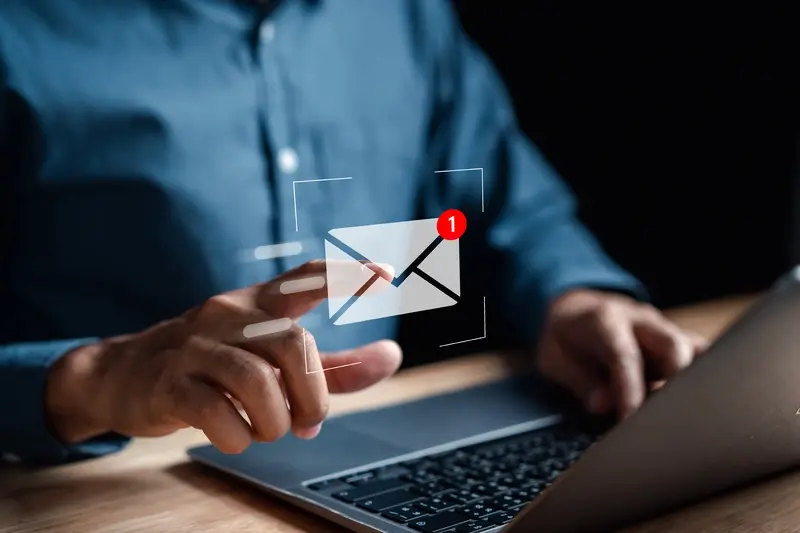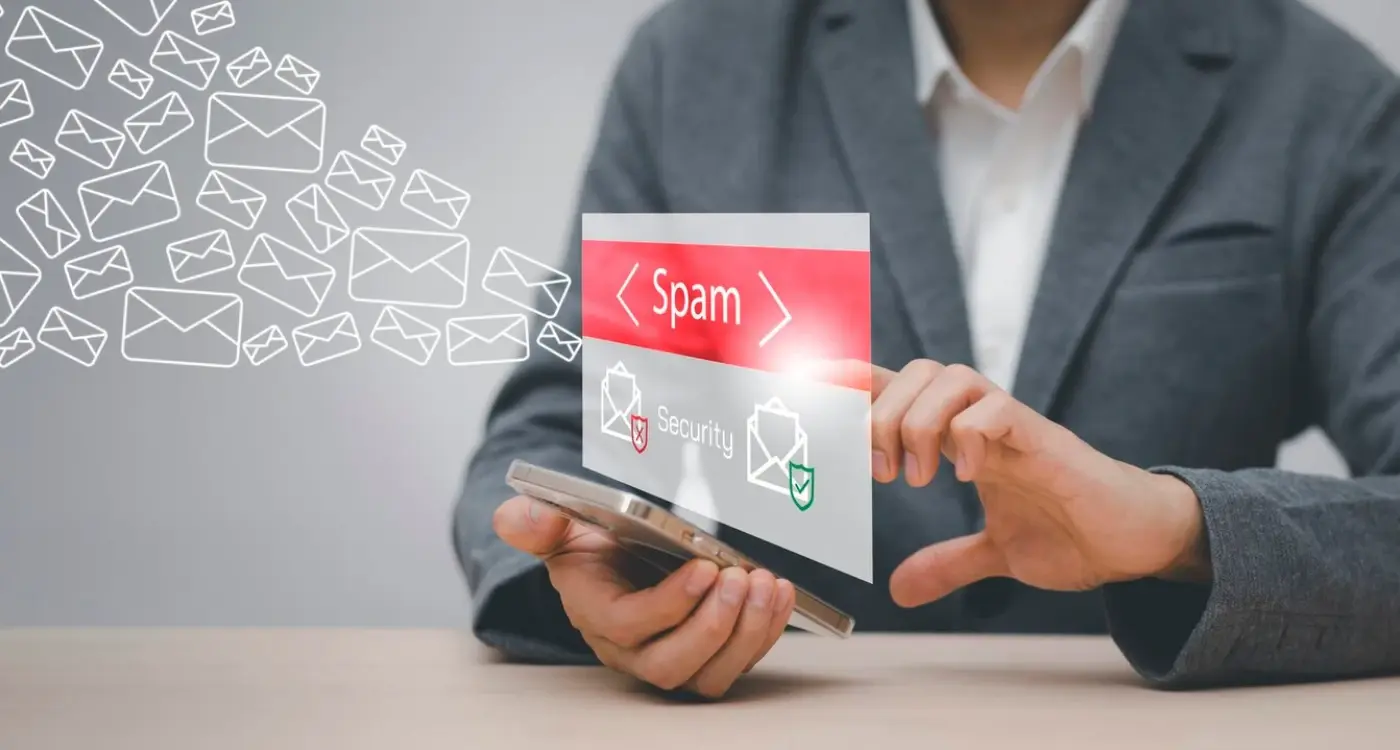How Do You Write Subject Lines That Get App Emails Opened?
You've spent months building the perfect mobile app, crafted beautiful push notifications, and set up a brilliant email marketing sequence. But when those carefully written emails land in your users' inboxes, they sit there unopened like expensive invitations to a party nobody wants to attend. Sound familiar? The truth is, most app developers think the hard work stops when the app launches—but actually, that's when the real challenge begins.
Email marketing for mobile apps is a completely different beast than traditional email campaigns. Your users are getting dozens of notifications every day, their attention spans are shorter than ever, and they're constantly switching between devices. What worked for desktop email marketing ten years ago simply doesn't cut it when you're trying to re-engage someone who downloaded your app but hasn't opened it in weeks.
I've been helping app developers boost their email open rates for years now, and I can tell you that the difference between a 15% open rate and a 45% open rate often comes down to those few words in the subject line. It's honestly a bit mad how much impact such a small piece of text can have on your entire user retention strategy.
The subject line is your one chance to convince someone that what you have to say is more interesting than the other 47 emails sitting in their inbox right now
But here's the thing—writing subject lines for app emails isn't just about being clever or catchy. It's about understanding mobile user psychology, knowing when your audience checks their email, and crafting messages that feel personal without being intrusive. Throughout this guide, we'll break down exactly how to do that, using real examples and proven strategies that actually work in today's crowded digital world.
You know what? Most app developers think about email marketing completely wrong. They focus on fancy designs and clever copy, but they're missing the biggest piece of the puzzle—understanding how people actually behave on their phones. And trust me, after building apps for nearly a decade, I've learned that mobile email psychology is a completely different beast than desktop.
Here's the thing that might shock you: the average person checks their phone 96 times per day. But they're not sitting down with a cup of tea to carefully read through emails like they might on a laptop. They're quickly scanning whilst walking, waiting for the bus, or during those awkward lift moments. Your subject line has about 2 seconds to grab their attention before they swipe to the next message.
The mobile screen real estate is brutal—you get roughly 30-40 characters on most phones before your subject line gets cut off. That's it. No second chances, no clever continuation that saves the day. I've seen brilliant email campaigns fail miserably because the subject line read "Important Update About Your Account Settings and New..." instead of something punchy like "Your account needs attention".
But here's what really matters: mobile users are driven by immediate gratification and quick decision-making. They want to know instantly whether your email is worth their time. This means your subject lines need to be scannable, benefit-driven, and create a micro-moment of curiosity or urgency. The psychology is simple—people are asking themselves "What's in it for me?" and "Can I deal with this later?" within milliseconds of seeing your message.
Actually, the most successful app emails I've worked on treat the subject line like a mobile notification. Short, clear, and action-oriented. Because that's exactly what they are competing with in your users mind.
Writing Subject Lines That Stand Out in Crowded Inboxes
Right, let's talk about the elephant in the room—everyone's inbox is absolutely rammed these days. I mean, the average person gets over 120 emails per day, and honestly? Most of them are competing for the same few seconds of attention. Your app's emails are fighting against everything from work messages to shopping deals to that newsletter they signed up for three years ago and forgot about.
The thing is, mobile users are even more ruthless than desktop users when it comes to email. They're scrolling through their phone whilst walking, waiting for the bus, or stealing a quick moment between meetings. You've got maybe two seconds to grab their attention before they swipe to delete. No pressure, right?
So what actually works? Well, I've seen apps dramatically improve their open rates by focusing on three key elements: curiosity, benefit, and brevity. Your subject line needs to make people think "I need to know what this is about" whilst clearly showing what's in it for them—all in about 30-50 characters because mobile screens are tiny.
Subject Line Formulas That Actually Work
After years of testing email campaigns for different apps, I've noticed certain patterns that consistently perform well:
- The Question Hook: "Ready for your next adventure?" works better than "New travel destinations available"
- The Benefit-First Approach: "Save 2 hours on your commute" beats "New route planning feature"
- The Curiosity Gap: "This changed everything for Sarah..." makes people want to know more
- The Personalised Insight: "Your January progress surprised us" feels much more relevant than "Monthly report available"
Keep your most important words in the first 30 characters—that's what shows up on most mobile preview screens, and it's often all users see before deciding whether to open or delete.
The key is testing different approaches with your specific audience. What works for a fitness app might bomb for a banking app, and what resonates with your users might be completely different from what works for your competitors.
Personalisation Without Being Creepy
Right, let's talk about walking that fine line between helpful personalisation and making your users feel like they're being stalked. I've seen apps get this spectacularly wrong—and honestly, it's a bit mad how some companies think users won't notice when they're being too invasive.
The trick is using data you already have in ways that feel natural. If someone's been browsing fitness content in your app, mentioning "your workout journey" in a subject line feels normal. But referencing their exact location at 7:23am yesterday? That's when people start deleting apps and leaving angry reviews.
Safe Personalisation Tactics
Here's what actually works without freaking people out. Use their name, but not in every single email—that gets old fast. Reference their app behaviour: "You've been crushing those daily streaks" or "Ready for your next challenge?" These feel personal because they're based on what users chose to do, not what you've been secretly tracking.
Time-based personalisation works brilliantly too. "Good morning" emails that actually arrive in the morning, or "weekend plans" messages sent on Friday afternoons. It's personalised but not invasive.
- Use their actual app activity, not external tracking data
- Reference achievements or milestones they've reached
- Mention their preferences they've explicitly set
- Time your emails based on their usage patterns
- Keep location references broad (city level, not street level)
The golden rule? If they wouldn't be comfortable with a shop assistant knowing that information about them, don't put it in your subject line. Your users will appreciate feeling understood rather than surveilled, and that's what keeps them opening your emails long-term.
The Power of Urgency and Scarcity in App Emails
Right, let's talk about urgency and scarcity—two of the most powerful psychological triggers you can use in your email subject lines. But here's the thing, they're also the most abused. I've seen so many apps cry wolf with fake countdown timers and made-up limited offers that users just roll their eyes and hit delete.
The key is making your urgency genuine. If you're running a legitimate flash sale or your premium features are actually discounted for a limited time, then absolutely use that in your subject line. "24 hours left: 50% off Premium" works because it's real. But sending "URGENT: Your account expires tomorrow!" when nothing actually expires? That's just damaging your brand trust.
Creating Real Scarcity
Scarcity works best when it's tied to something tangible. Maybe you've got limited spots in a beta program, or you're launching a new feature to your first 1000 users only. I've worked with fitness apps that created genuine scarcity around personal training slots—"3 spots left for tomorrow's session"—and the open rates were consistently high because users knew these were real constraints.
The most effective urgency isn't about time running out, it's about opportunities being missed
Actually, one approach that works really well is milestone-based urgency. Instead of arbitrary deadlines, tie your urgency to user behaviour: "You're 2 workouts away from your monthly goal" or "Complete your profile today to unlock advanced features." This feels natural and helpful rather than pushy.
The mistake I see most often? Using urgency for everything. Save it for when it actually matters—your users will trust you more, and when you do need to create urgency, they'll actually pay attention.
Testing and Measuring Your Subject Line Performance
Right, lets talk about the fun part—actually testing your subject lines to see what works. I've been doing this for years and I still get surprised by which subject lines perform well and which ones completely flop. That's why testing isnt optional; it's the difference between guessing and knowing what your users actually respond to.
A/B testing is your best friend here. Split your email list in half and send different subject lines to each group—but here's the thing, only change one element at a time. If you test "Your daily streak is at risk!" against "Don't lose your 7-day streak, John" you're testing urgency AND personalisation at once. You won't know which element made the difference. Test the urgency first, then the personalisation in your next email.
What Metrics Actually Matter
Open rates are the obvious metric, but they're not the whole story. I always look at click-through rates too because whats the point of getting someone to open an email if they don't take action? A subject line might get amazing opens but terrible clicks—that usually means you've oversold the content inside.
Unsubscribe rates tell you when you've pushed too hard. If your "URGENT: Account expires in 24 hours!" subject line gets great opens but lots of unsubscribes, you've probably annoyed people who know their account isnt actually expiring.
Tools and Timing
Most email platforms have built-in A/B testing, but I recommend testing with at least 1,000 people in each group to get meaningful results. Any smaller and you're basically flipping a coin. Run your test for 24-48 hours before declaring a winner—some people check emails at different times.
Keep a spreadsheet of your winning subject lines. You'll start spotting patterns in what works for your specific audience, and that's when email marketing gets really powerful.
Different app categories need completely different email approaches—what works for a fitness app will fall flat for a banking app. I've seen too many apps copy subject line strategies from other industries without considering their own users behaviour patterns.
Gaming apps can get away with playful, emoji-heavy subject lines like "🎮 Your kingdom needs you!" or "Last chance to claim your gems!" These users expect fun and excitement. But try that approach with a healthcare app? Your open rates will tank faster than you can say "professional credibility".
Matching Tone to User Expectations
Financial apps need to balance urgency with trust. Something like "Your account update is ready" works better than "URGENT: Check this now!" The second option screams spam, even if its legitimate. Healthcare apps should focus on value and care: "Your wellness report has arrived" feels supportive rather than pushy.
E-commerce apps have more flexibility—they can play with seasonal themes, product launches, and sales events. "Back in stock: That item you loved" taps into FOMO without being aggressive. Social apps thrive on connection and curiosity: "3 people want to connect with you" works because it promises social validation.
Study your competitors' subject lines, but don't copy them. Instead, identify what tone and style resonates in your industry, then find your unique angle within those boundaries.
Industry-Specific Performance Patterns
| App Category | Best Performing Style | Avoid |
|---|---|---|
| Finance | Clear, informative | Excessive urgency |
| Gaming | Playful, emoji-rich | Corporate language |
| Healthcare | Caring, supportive | Aggressive CTAs |
| E-commerce | Product-focused | Generic promotions |
| Productivity | Benefit-driven | Cute or quirky |
The key is understanding your users context when they see your email. A meditation app user might appreciate "Take 5 minutes for yourself today" but a trader using a stock app needs "Market alert: FTSE movement detected." Match the urgency and tone to what your users actually need from your app.
Common Subject Line Mistakes That Kill Open Rates
After years of sending millions of app emails, I've seen every subject line mistake you can think of—and honestly, some of them make me want to bang my head against the desk! The good news? Most of these mistakes are completely avoidable once you know what to look out for.
The biggest killer I see is being too vague. Subject lines like "Update from our team" or "Important information" tell users absolutely nothing about what's inside. Your subject line needs to give people a reason to open that email, not leave them guessing what its about.
The Top Subject Line Killers
- Using ALL CAPS (it looks like you're shouting and triggers spam filters)
- Adding too many exclamation marks!!! (one is enough, really)
- Making promises you can't keep ("Get rich quick with our app")
- Being overly salesy ("BUY NOW! LIMITED TIME OFFER!")
- Using spam trigger words like "free," "guaranteed," or "act now"
- Making subject lines too long (they get cut off on mobile)
- Forgetting to test on different devices and email clients
Another mistake that drives me mad? Not considering mobile users. Most people read emails on their phones, which means your subject line gets cut off at around 30-35 characters. If your most important information is at the end, nobody will see it.
And here's something that catches many app developers out—using technical jargon or internal company language that means nothing to your users. Your subject line should speak their language, not yours. Remember, you want to start a conversation, not end one before it begins.
Quick Recovery Tips
If your open rates are struggling, start by checking these basics: keep it short, make it relevant, and always ask yourself "would I open this email?" If the answer's no, neither will your users.
Conclusion
Right, let's wrap this up. After years of building apps and watching countless email campaigns succeed or fail spectacularly, I can tell you that email subject lines aren't just words—they're the difference between your app thriving or getting lost in the digital noise. The basics we've covered here work because they tap into real human psychology, not marketing fluff.
Your users are already overwhelmed with notifications, emails, and app demands for their attention. Every subject line you write is competing against their mortgage provider, their mum's birthday reminder, and about fifty other apps all shouting "look at me!" So what makes yours special? It needs to feel personal without being weird, urgent without being pushy, and valuable without overselling.
The testing part is where most app developers get lazy, honestly. You can write the most clever subject line in the world, but if your audience doesn't respond to it, it's useless. A/B testing isn't optional anymore—it's part of the job. What works for a fitness app won't work for a banking app, and what works for your competitor definitely won't work for you.
Here's what I want you to remember: good email subject lines for apps are built on understanding your users' mindset when they're on their phones. They're distracted, they're busy, and they're one swipe away from deleting your email forever. Make every word count, test everything, and never stop learning from your open rates. Your app's success depends on it.
Share this
Subscribe To Our Learning Centre
You May Also Like
These Related Guides

What Are The Best Practices For App Update Notification Emails?

What Email Types Work Best for App User Onboarding?



